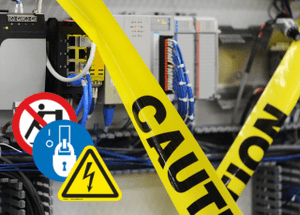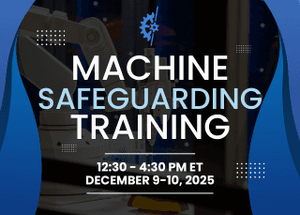Staying Safe When Working in Trenches and Excavation

As many of you may know, June is widely recognized as National Safety Month, but it’s also recognized by the National Utility Contractors Association as Trench Safety Month, with this week, June 20-24, being recognized as a Trench Safety Stand Down. Much like other stand down events, this is a time where it’s a great opportunity for employers to talk directly to their employees about safety. Many construction projects require workers to dig trenches or perform excavation work. Injuries and fatalities continue to occur in these situations, even with OSHA regulations, guidelines and prevention measures in place. That’s why it’s important for safety and health professionals to have a thorough understanding of hazards associated with trench and excavation work, as accidents related to them are not only recognizable, but preventable.
Defining Trenches and Excavation
What exactly is a trench? What is the definition of excavation? It’s important
to understand and define these terms to recognize when you have a hazard
present at your worksite, and to be able to take the right safety measures to
prevent accidents.
OSHA defines a trench as a narrow underground excavation that is deeper than it is wide, and is no wider than 15 feet. Trenches are used for many different types of civil engineering projects, from pipes and roads to telephone wires. An excavation is defined as a man-made cut, cavity, trench, or depression in the earth’s surface, formed by earth removal.
The bottom line is that construction projects of all sorts that move dirt from one location to another can pose an assortment of risks, including cave-ins but also related peripherally to hazardous atmospheres, falling materials or objects, water accumulation and damaged underground utilities.
Trench Accidents By the Numbers
It’s little wonder that OSHA has made reducing trench and excavation hazards a
top priority. Consider these statistics from the Bureau of Labor Statistics: since
2016, fatalities related to trenches and excavation have steadily been on the
rise and showing higher numbers than the previous five years. The greatest risk
to workers’ lives, statistics show, is posed by trench cave-ins or collapses.
Out of 203 trench and excavation fatalities, 166 of them were caused by trench
collapses.
OSHA Standards and Preventing Trench
Cave-ins and Collapses
OSHA recommends a combination of engineering controls, protective equipment and
safe work practices as necessary elements to minimize hazards associated with
trenches and excavated areas. Its standards require that trenches and
protective systems be inspected daily and as conditions change by a competent
person before work begins.
As cave-ins and collapses are one of the greatest risks to workers lives, OSHA details three specific preventative safety measures on this front: slope or bench trench walls, shore trench walls with support, or shield trench walls with trench boxes.
Compliance Resources and Safety Tips
The U.S. Department of Labor has a video recommended through OSHA as a compliance resource for those
who work around trenches and excavated areas. The public service announcement
addresses ‘5 Things You Should Know to Stay Safe in a Trench’ including:
- Ensuring safe entry and exit
- Having cave-in protection
- Keeping materials away from the edge of the trench
- Looking for hazards like standing water
- Only entering trenches that have been inspected
When it comes to trench safety standards, OSHA recommends the utilization of 29 CFR 1926.650 to define the scope and definitions related to excavations, 29 CFR 1926.651 for specific excavation requirements (PPE, inspections, controls), and 29 CFR 1926.652 for protective systems requirements.
Support Your Safety Measures
If you participate in any safety talks or meetings with employees this week, be
sure to fill out this online form from the NUCA
to receive recognition for your trench safety awareness this month. Keeping in
mind that even a small reminder can save lives, it’s also important to make
sure that your physical controls are up to date in the workplace.
Along with engineering and administrative controls, signage plays an important role in minimizing
risk, ensuring that those entering and working near the area are aware of
potential dangers and are taking the precautions necessary to stay safe.
Shop our confined space and fall prevention safety products today – or work with us to customize a sign to fit your specific worksite’s requirements. If you have questions about how to best outfit your worksite or equipment, feel free to reach out to our team of safety professionals today!



